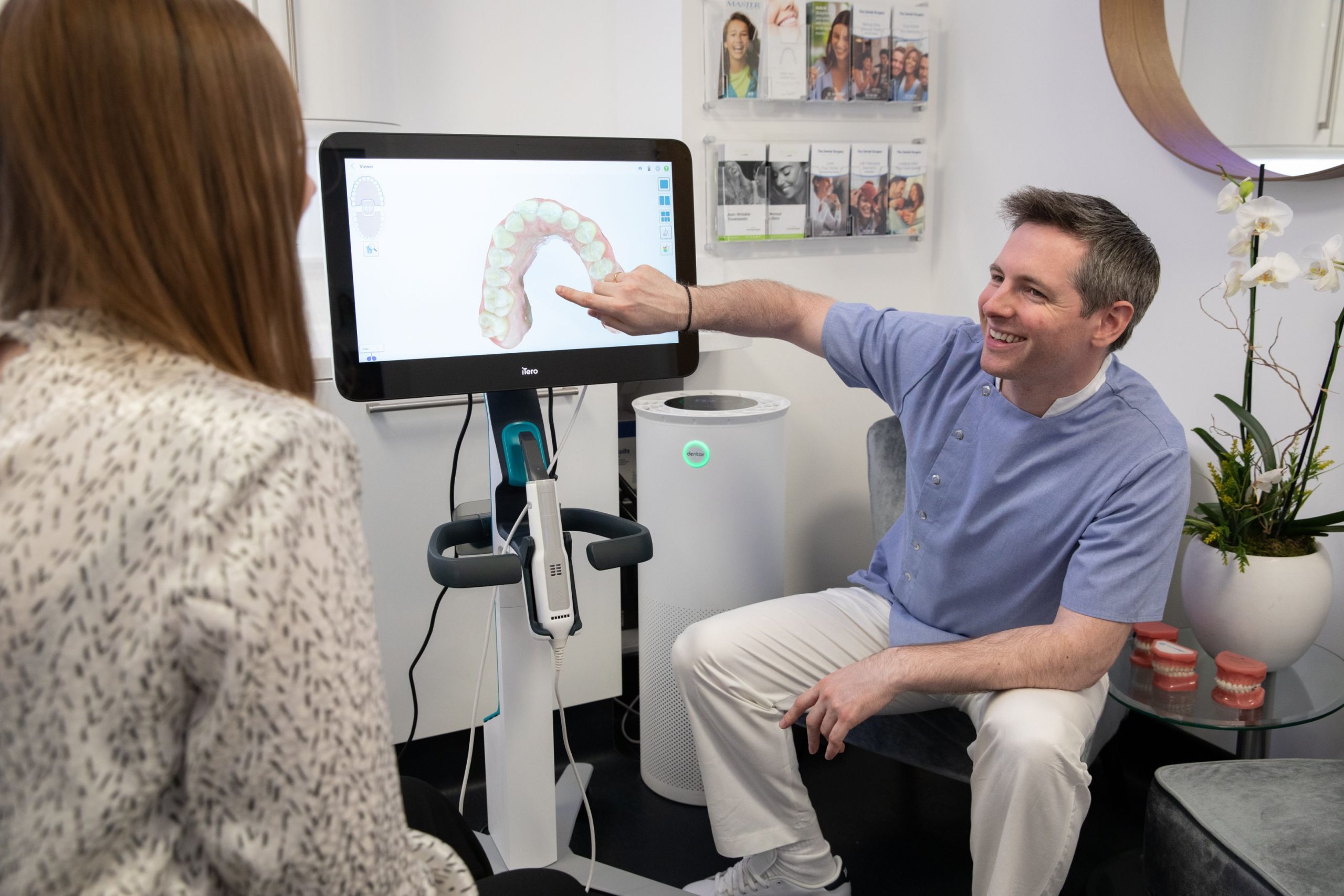-
Categorised as:
- Teeth Straightening
Can You Have Braces as an Adult?
Yes! There is no set upper age limit for braces. They remain an effective treatment for anyone who has irregularities that would benefit from treatment, be that to correct a smile, a misaligned bite, crooked teeth, impacted canines or other conditions.
The reasons for getting braces are the same as those for children: to correct any alignment irregularities but also to restore confidence. The British Orthodontist Society found that 52% of 12-year-olds have been embarrassed to laugh or smile due to what they perceive as problems with their teeth.
While there is no equivalent figure for the adult population, we would suggest that it is fair to say that these conditions do not go away. Any child who has self-esteem issues relating to their mouth and teeth alignment stands a good chance of carrying this in to adult life. It remains something that is worth treating.
What Is The Process of Getting Braces as an Adult?
Having braces fitted starts with a consultation with an orthodontist. They will ask you about your dental history and then also undertake a clinical examination, on top of which photos, x-rays and a digital impression of teeth will all be taken.
This enables the orthodontist to see whether braces are required and which type is suitable; it might even be that a retainer is more suitable.
The braces would then be made and fitted. How long they remain in place, of course, varies by patient and the nature of the work, but between one and three years is typical. However, don’t worry if having braces for that long is starting to ring alarm bells, other options are available, and we will come to those.
How Do Braces Work?
Braces work by applying continuous pressure and slowly making the desired correction by moving the teeth. You will have regular orthodontic follow-up appointments to check on the progress.
After the braces come off, the patient then wears a retainer, full-time at first but then simply using it overnight after the initial period.
The length of time is a concern…
Using braces to correct the alignment of teeth is not a quick process, there is no way to sugar coat that (sugar coat perhaps an unfortunate phrase).
The thought of having visible braces for a period of time that could run to two or three years is naturally off-putting to some, we understand that.
However, braces do not have to be the metal brackets and stainless steel wires you might be picturing, they can be far more discreet and almost clear.
In some cases, the brackets can even be attached to the back of teeth, thereby hiding the braces from view (also known as labial braces ).
Can Adults Get Invisalign?
There is also an appliance called Invisalign which works by providing the patient with a series of nearly invisible, removable aligners which they will change often under the guidance of the orthodontist.
This gradually moves the teeth into the desired position and real change can be seen in a matter of months. Invisalign aligners hardly affect speech and are taken out for short periods of time when eating or cleaning teeth.
There is more information about Invisalign on their site, including the ability to find approved, local orthodontists; you can even rank them by experience level. At The Dental Surgery, we are proud to be one of the London orthodontists that have achieved Platinum Status.
Are there any extra complications?
While the process is essentially the same whatever the age of the patient, the increased chance of pre-existing gum disease with age does mean that there might be a need to carry out some hygiene work prior to the braces being fitted to ensure proper movement of the teeth.
It is very rare for children, especially those as young as eight to 10, to have bleeding gums (a sign of either gingivitis or the more serious periodontitis, a condition whereby the build-up of plaque leads to gum and bone erosion).
The chances of an adult patient having either gingivitis or periodontitis are high, more than half of all UK adults have some degree of gum disease according to the NHS.
Fortunately, none of this represents a huge problem, any pre-existing conditions would simply need treating prior to braces being fitted, which a thorough hygiene treatment and at-home programme can treat.
When thought of in the context of your overall dental health, this makes complete sense; there would be little point having the work to realign teeth carried out yet leaving an existing condition in place, especially one that is so easy to treat using modern hygienist methods.
Where can I get more information?
If you feel that braces might well be for you, then an appointment with one of our orthodontists is the natural starting point, if you are in London we would love to welcome you to The Dental Surgery – simply call or email us, or book online.
Alternatively, you might just want to do a bit more reading. We recommend the British Orthodontist Society’s website, there is a wealth of information including all of their leaflets, downloadable in pdf format. Or you could give us a call and speak to one of our Orthodontic team members.
Arm yourself with information and go and have that chat with an orthodontist – it might also be worth remembering to ask about Invisalign!
* Braces Payment Plan
We offer a payment plan on our orthodontic treatments, with half payable at the start of treatment and the balance payable over the following 10 months at 0% interest. Please contact us for more information
Do you have a specific question?
Get in touch with us today.



